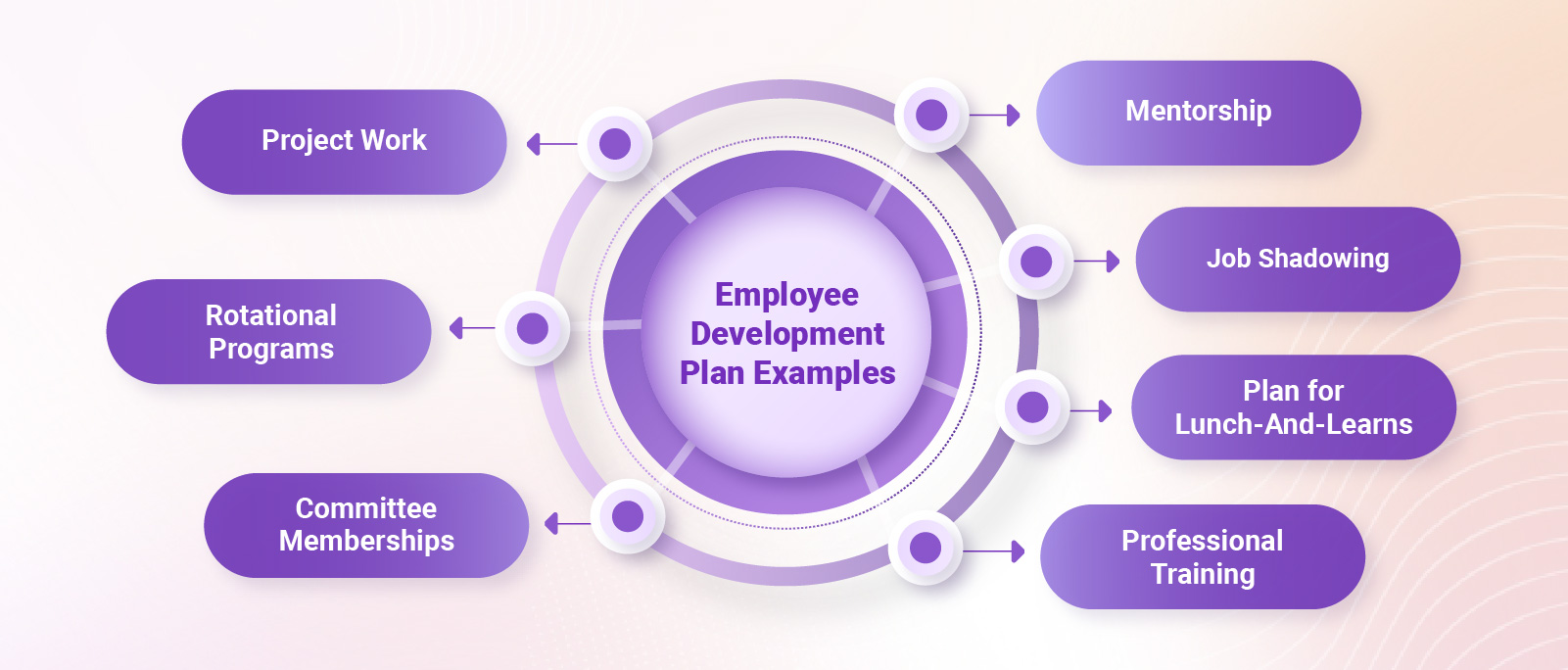May 17, 2023
Boost Your Workforce with an Employee Development Plan

Individuals who received leadership training increased their learning capacity by 25% and their performance by 20%, according to the findings of a study conducted by Research Gate, 2017. This shows that if your employees prosper, your business succeeds too. You should make employee development an intrinsic part of your company culture. Your people can be highly engaged only when you help them stay up-to-date on new skills and industry best practices. Besides, you attract top talent by trying to develop your existing employees.
So, what exactly is employee development and how to create a strong employee development plan that shows you care about your people’s growth?
What is an employee development plan?
It is an actionable process that allows team members to learn new information and skills. They can thus succeed in their existing roles while getting ready for future roles in the same company or elsewhere. When you build an employee development plan for your organization, your employees feel happy and engaged, with a chance to grow professionally and, thus, personally.
Let us now look at how to develop a strong employee development plan.
Building a Robust Employee Development Plan
Step #1
Assess Your Organization and Long-term Goals
Before acting on a plan, evaluate your current workforce and your company. The future you envision for your organization must be clear in your head. Consider how your employees and teams operate currently. Only then can you decide what to change to progress in the right direction while fixing challenges.
The central idea here is to accomplish these key objectives:
- Offer opportunities that align with and meet your employees’ aspirations.
- Address the strategy and long-term growth goals of your organization.
- Take care of leadership training by helping employees groom themselves and rise as future managers and leaders.
Your employee development plan is nothing less than a strategic employee engagement play. The aim is to ensure your staff feels valued and stays interested in their work. Besides, when you know where you want to reach or what you should do to achieve higher business success, you enable your employees to acquire the requisite skills. You can thus meet your business objectives. With organizational growth, leadership roles open.
Step #2
Brainstorm Avenues for Professional Development
Your employees must be answerable for sticking to the employee development plan, while managers should have the onus of mentoring and supporting their reports on their career paths. It is your job as the leader of your organization to motivate managers and employees to meet and discuss the employee development plan. Managers and their team members must brainstorm avenues for professional development, and they can do so during 1-on1s too. Employee experience platforms enable you to connect with your team members individually. There are things your people enjoy about their work but also find difficult and disinteresting. Learn from them how they want to progress in their current job role. Customizing development plans or learning opportunities according to your employees’ needs is crucial. The learning journey goes for a toss if your employees aren’t receptive enough.
Step #3
Provide Offerings for Development
You must generate professional development opportunities across the company by implementing specific employee plans. Your employees may not be available to take offline classes and learn but are interested in being part of skills training courses. You may thus offer them e-learning courses, which they can take up and complete anytime, anywhere. Once you have shared access to the platform where your employees can launch courses they are interested in, they can learn while working. Besides, you may host webinars for those interested in a comprehensive understanding of a particular topic. A professional development stipend may also support employees in caring for their learning interests.
Step #4
Evaluate Your Employee Learning Efforts
Understand that employee development doesn’t benefit companies instantly. For instance, after the sales training of your sales department, deals may not close overnight, but in the long run, there will be a substantial improvement in sales closing and employee retention. Responses of your employees matter a big deal. Professional development opportunities boost employee engagement, and you must conduct employee engagement surveys to learn if that works. Only then can you discover how happy and interested your employees are in your professional development offerings.
Employee Development Plan Examples

